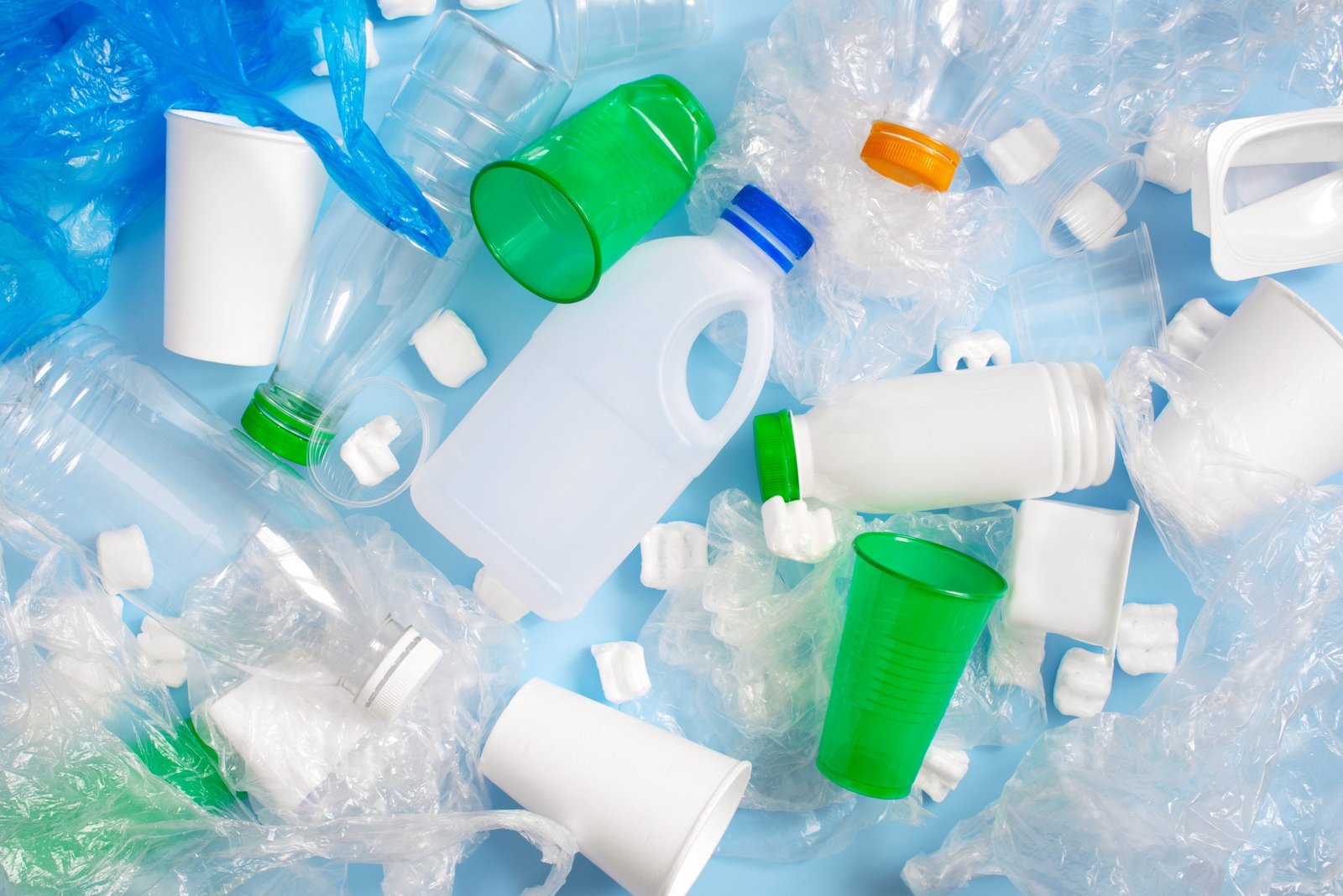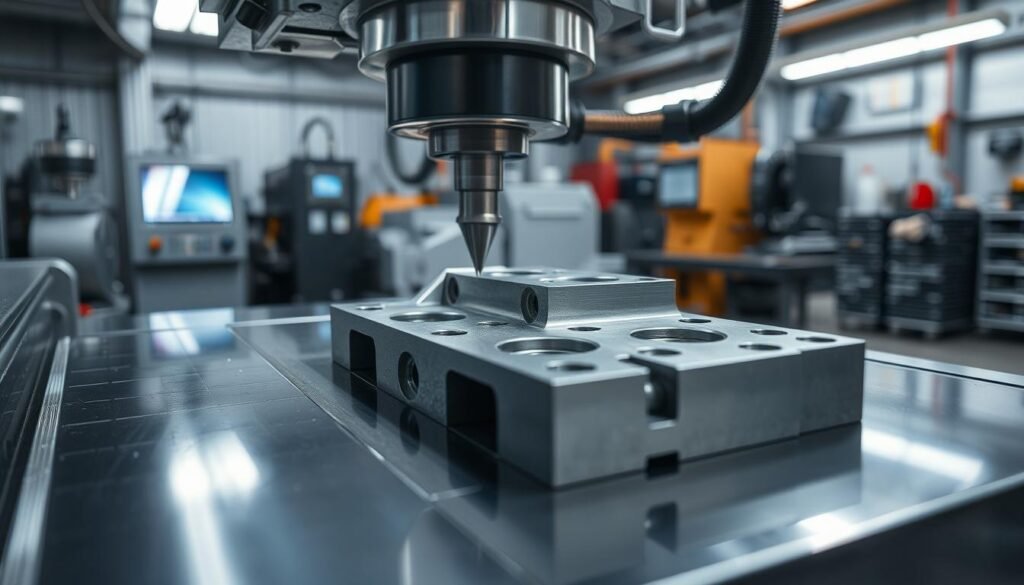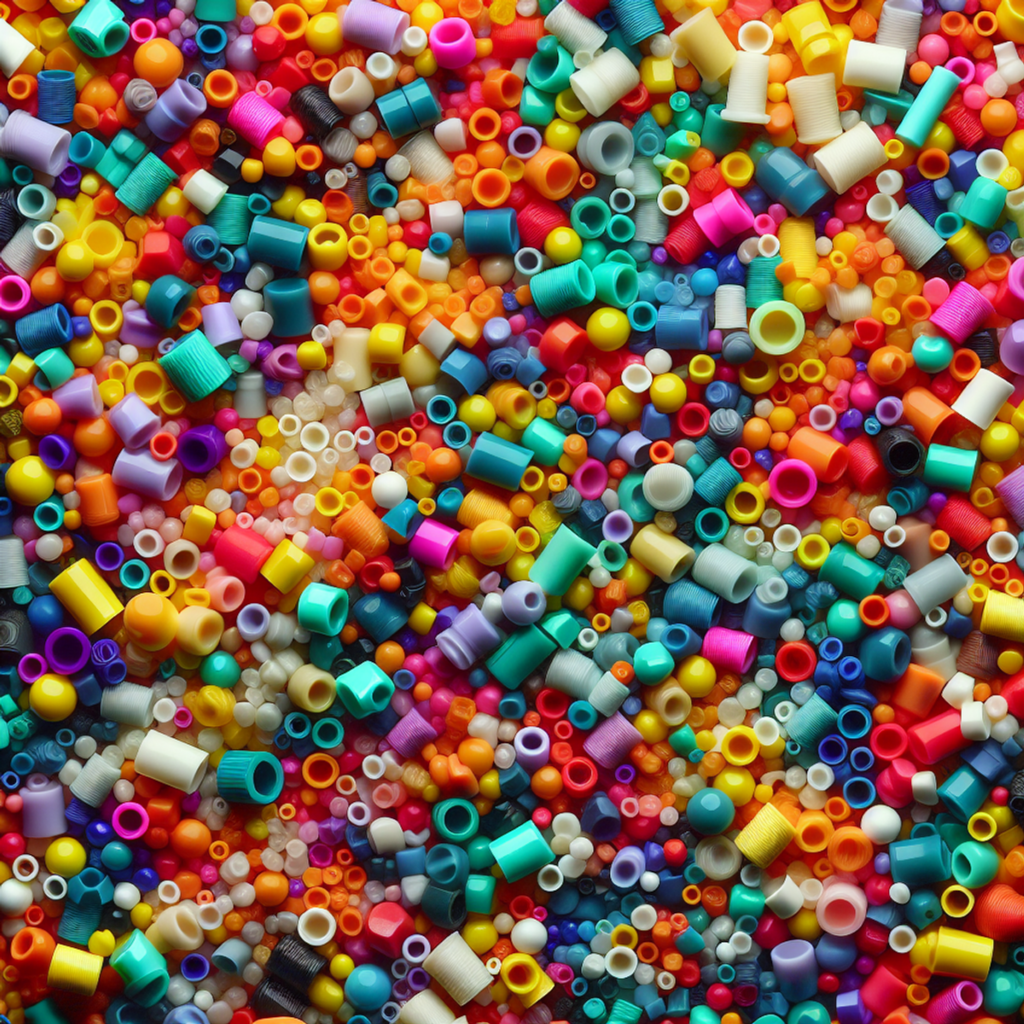Introduction to Plastic Recycling: Understanding the Basics
Plastic recycling is a complex process involving various steps to convert discarded plastic materials into reusable forms and products. The first step in plastic recycling is collecting and sorting plastics, which can be challenging due to the myriad types of plastic materials, each with its own recycling requirements. After collection, plastics are often sorted by type, color, and sometimes by the previous use to streamline the recycling process.
Once sorted, plastics undergo cleaning to remove any contaminants such as food residue or adhesives. This step is crucial as purity is key to ensuring the quality of the recycled material. After cleaning, the plastics are shredded into smaller flakes or chips, which makes subsequent processing more manageable. These flakes can be further washed to ensure the removal of any remaining contaminants.
The plastic flakes are then subjected to a melting process, which reforms them into a consistent, malleable substance. During this stage, the plastic can be extruded into fibers for textiles or molded into a variety of shapes for different uses. This molten plastic is finally cooled and cut into small pellets, which are known as recycled resins. These pellets serve as the raw material for manufacturing new plastic products.
Recycling helps in the conservation of natural resources and energy, reduces pollution, and mitigates the impact of plastic waste on the environment. The demand for recycled plastics is on the rise as both consumers and manufacturers increasingly seek sustainable material options. Understanding the basic principles of plastic recycling is vital for appreciating its environmental significance and challenges.
The Lifecycle of Plastics: From Production to Disposal
The journey of plastics begins with production, where raw materials, mainly natural gas or crude oil, are processed into resins. This process typically involves polymerization or polycondensation and requires significant energy input.
- Extraction and transportation of raw materials: It starts with the extraction of fossil fuels, followed by their transport to manufacturing facilities.
- Refining and polymerization: Here, the materials undergo refining to produce monomers that are then polymerized into polymers, the building blocks of plastics.
- Formation into plastic products: The polymers are then molded or extruded into the final plastic products, such as bottles or other packaging materials.
- Usage by consumers: Plastics are transported to various locations for consumer use, serving myriad roles from storage containers to integral parts of electronic devices.
At this stage, the disposal aspect comes into play. Typically, plastics end up in one of the following paths:
- Recycling: Plastics can be recycled, where they are cleaned, broken down into small pellets, and reformed into new products. This stage marks the beginning of secondary life for recycled plastics.
- Landfill: When not recycled, plastics often end up in landfills. Here, they can take hundreds of years to decompose, potentially leaking pollutants into the soil and water.
- Incineration: Plastics are sometimes burned for energy recovery. However, this process releases harmful gases into the atmosphere, contributing to air pollution and health risks.
- Environmental leakage: Plastics can inadvertently find their way into natural environments, causing significant harm to wildlife and ecosystems.
Throughout this lifecycle, plastics have far-reaching impacts on energy consumption, resource utilization, and environmental health, underscoring the critical importance of responsible production, consumption, and disposal methods.
Collection and Sorting: The First Steps in Plastic Recycling
Before plastic waste can be transformed back into useful materials, it must be collected and sorted effectively. This initial phase is critical to ensure the success of the recycling process.
Collection systems vary by region, but typically involve curbside pickup, drop-off centers, or deposit-return programs. Participation from households, businesses, and public spaces is essential to gather a significant amount of plastic waste. Collected plastics are then transported to recycling facilities for the next stage.
Upon reaching a recycling center, the sorting process commences. This is a multi-step effort that separates plastics by type and quality:
- Manual Sorting: Workers remove contaminants, such as non-plastic items and plastics unsuitable for recycling, which may include dirty or heavily dyed materials.
- Shredding: The plastics are shredded into smaller pieces, making them easier to process and sort further.
- Air Classification: Lighter plastic fragments are separated from heavier ones using air currents.
- Sink-Float Separation: Different types of plastic have different densities. By using tanks of water, some plastics will float while others sink, allowing for further separation.
- Near-infrared (NIR) technology: Advanced sorting machines can identify and sort plastics based on their resin content and color.
The outcome of this meticulous sorting process is categorized plastic material, ready for the next step in recycling. Ensuring that each plastic type is correctly identified and segregated is crucial because mixing different types can reduce the quality of the recycled product. This stage sets the foundation for efficient and high-quality recycling efforts, allowing plastics to be repurposed into raw materials for new products.
Washing and Shredding: Preparing Plastics for Recycling
Once collected and sorted, plastic materials undergo a critical cleaning process. This step is essential to remove any contaminants that could compromise the quality of the recycled plastic. Washing also helps in separating different types of plastics based on their density.
- Rinsing: The plastics are first rinsed to wash away loose debris. In large-scale operations, this may involve automated water jets or soaking in large tanks.
- Detergent Wash: A more thorough cleaning involves a hot water and detergent solution that helps to break down and remove residual substances. Labels, adhesives, and food residues are common contaminants.
- Air Drying: After washing, the plastics are dried using blowers or by spreading them out to air dry to prevent any moisture from affecting the subsequent shredding process.
Following the cleaning stage, the dry plastics are ready to be shredded. Shredding reduces the material into smaller, manageable pieces, making it easier to process further.
- Single-step Shredding: In some cases, plastic items can be shredded in a single pass through a granulator or shredder.
- Multi-step Size Reduction: For bulkier items, a two-step process may be necessary. Initially, the plastic is cut into larger chunks before being processed through finer shredders for a consistent size.
Size uniformity is key to ensuring smooth processing in the stages that follow. It also helps in better mixing of the different types of plastics when making new products. By the end of the shredding process, what were once bottles and containers are now small plastic flakes or pellets, poised to enter the next phase of their recycling journey.
The Granulating Process: Turning Plastic Waste into Pellets
In the transformative world of plastic recycling, the granulating process is a pivotal stage that converts plastic waste into small, manageable pellets, preparing it for a new life in various applications. The procedure begins with sorting and washing the collected plastic materials to remove impurities and contaminants. These clean plastics are then subjected to shredding, where they are cut into smaller flakes for easier processing.
Once the plastic flakes are obtained, they enter the granulator – a machine designed to apply intense mechanical force to break down the plastic into even smaller pieces. The granulator’s rapidly rotating blades finely chop the plastic flakes into granules, typically ranging in size from 5mm to 10mm. Throughout this process, consistency in size is crucial to ensure an even melting point in subsequent recycling procedures.
To guarantee the uniformity of the pellets, a screening process follows granulation. Here, any oversize or undersize granules are separated and may be sent back through the granulator for additional processing. The consistent pellets then proceed to a cooling phase, often employing a water bath or air blast, to solidify and prevent agglomeration.
The resultant plastic pellets are a versatile raw material, ready to be melted and remolded into new products. They encapsulate the tireless cycle of plastic recycling and represent the transformation of what was once discarded waste into a resourceful commodity.
- Sorting and washing to remove impurities
- Shredding plastic into flakes
- Granulating flakes into smaller granules
- Screening for size consistency
- Cooling to solidify pellets
This granulating process is a testament to recycling technology’s capability to create sustainable materials from plastic waste, contributing significantly to environmental conservation and resource management.
Quality Control: Ensuring the Integrity of Recycled Pellets
Quality control is a pivotal stage in the transformation of discarded plastic bottles into recycled plastic pellets. The integrity of recycled pellets is essential as they serve as the raw material for the production of new plastic products. Ensuring the quality and purity of these pellets involves a multi-step process that scrutinizes the material at various points along the recycling journey.
Firstly, a thorough inspection of collected plastic bottles is conducted to remove contaminants such as other types of plastics, metals, and non-recyclable materials. Advanced sorting technologies, including air classifiers, infrared scanners, and eddy current separators, are deployed to facilitate this purification process.
Once the plastic is sorted and washed, it is subjected to mechanical shredding where it is transformed into smaller flakes. These flakes undergo further cleaning to remove residual impurities, such as labels and adhesives. The cleansed flakes are then tested for quality; parameters such as size, melting point, and purity are assessed to ensure they meet strict industry standards.
Next, these high-quality flakes are melted and formed into recycled pellets. During this extrusion process, continuous monitoring is vital to maintain uniform pellet size and composition. It is crucial that the pellets are homogenous as inconsistencies can lead to problems during the manufacturing of new products.
Finally, before being packaged and shipped to manufacturers, the recycled pellets are sampled and analyzed. Tests performed include checking for proper melt flow index, tensile strength, and color consistency. The goal is to verify that the pellets exhibit properties similar to virgin plastics, ensuring they are fit for high-quality applications in various industries. Only pellets that pass these stringent quality tests are deemed suitable for reintroduction into the market, closing the recycling loop with integrity and efficacy.
The Role of Recycled Pellets in the Circular Economy
Recycled pellets play a pivotal part in fostering a circular economy by bridging the gap between waste generation and sustainable resource use. Typically made from plastic waste, these pellets serve as a raw material that can supplant virgin commodities, thus reducing the need for new resources. This process starts with the collection and sorting of plastic waste, leading to the production of high-quality recyclables. The resulting pellets, when reintegrated into the production cycle, demonstrate the practicality of repurposing waste material.
To understand their integral role, consider the following points:
-
Resource Conservation: By using recycled pellets, manufacturers cut down on the extraction of new materials, thereby conserving natural resources. The circular economy is defined by such resourcefulness, which encourages the reuse of materials through recycling initiatives.
-
Energy Efficiency: The production of recycled pellets consumes less energy compared to creating virgin plastics. This energy saving translates to reduced greenhouse gas emissions, a vital consideration for any sustainable economy.
-
Market Development: Recycled pellets create new market opportunities. They provide industries with alternative materials that can be cheaper and environmentally beneficial. These markets endorse further investment in recycling technologies and infrastructure.
-
Waste Reduction: The use of recycled pellets significantly diminishes the volume of waste sent to landfills. It supports waste management goals, prioritizing recycling over disposal and contributing to minimized environmental impact.
-
Pollution Mitigation: By turning plastic waste back into a valuable resource, recycled pellets help combat pollution. This continual reuse can reduce plastic litter in oceans and natural habitats, safeguarding ecosystems.
In essence, recycled pellets are a keystone element in the workings of a circular economy. Their use promotes a seamless loop of material usage and regeneration, showcasing the practical and environmental advantages of a shift from a linear, use-and-dispose model to an all-encompassing, regenerative one.
Challenges and Innovations in Plastic Recycling Technology
The landscape of plastic recycling is fraught with complexities, owing to various issues that inhibit efficient processes. Yet, continuous innovation is the torchbearer to overcoming these hindrances.
Challenges
- Contamination: Plastic waste often carries contaminants, which may include food residue, other material composites, and previous-use chemicals. This significantly complicates the recycling process and can compromise the quality of recycled products.
- Sorting Difficulties: Effective recycling necessitates sophisticated sorting, separating plastics by type and color. Current technology struggles to identify and separate plastics with high precision, leading to inefficiencies.
- Economic Viability: The cost of recycling can outweigh the economic value of the recycled plastic. This creates a lack of incentive for investment in upgraded recycling technologies.
- Degradation of Material: Plastic quality degrades with each recycle, leading to downcycling – where recycled plastic is destined for lower value and quality applications.
Innovations
In response, innovators are diligently working toward novel solutions:
- Advanced Sorting Mechanisms: Technologies such as AI-powered robots, spectral-imaging techniques, and machine learning algorithms are improving the sorting of plastics.
- Chemical Recycling: This approach aims to break down plastics into their fundamental chemicals, enabling the creation of new plastics with no loss in quality.
- Enzymatic Breakdown: Researchers are pioneering the use of enzymes to break down plastics into their original monomers, which could be a game-changer in recycling polyethylene terephthalate (PET) plastics.
- Eco-friendly Bioplastics: The development of bioplastics, which decompose more readily and pose less environmental harm, is gaining traction as a sustainable alternative to traditional plastics.
In conclusion, while there are significant challenges in the realm of plastic recycling, there is also a surge of technological advances that hold the promise of a more effective, efficient, and sustainable recycling ecosystem.
Environmental Impact: The Benefits of Plastic Recycling
Recycling plastic yields myriad environmental benefits that underscore its importance as a practice intertwined with the sustainable management of resources. One of the critical advantages includes the reduction of the ecological footprint of plastic production. By repurposing used plastics into new items, the demand for raw materials, such as oil and natural gas, diminishes significantly. This not only conserves these non-renewable resources but also limits the environmental degradation associated with extraction processes.
Moreover, the energy savings from recycling processes are substantial when compared to the manufacturing of new plastics. The conservation of energy leads to decreased emissions of greenhouse gases, thereby mitigating the impact of climate change. Recycling one ton of plastic can save up to 2,000 gallons of gasoline, making the practice an energy-efficient alternative to traditional plastic production.
Another pivotal benefit is the reduction in plastic pollution. Recycling prevents the accumulation of plastic waste in landfills and in natural habitats, where it can cause harm to terrestrial and marine life. By diverting plastics from these environments, the risks of soil and water contamination are also lessened, safeguarding ecosystems and species diversity.
- Conserves non-renewable resources
- Reduces the environmental destruction from resource extraction
- Saves significant amounts of energy
- Lowers greenhouse gas emissions
- Prevents plastic pollution in natural habitats
- Minimizes soil and water contamination
- Protects ecosystems and maintains biodiversity
The process of transforming used plastic bottles into pellets not only represents a cycle of material reuse but also signifies a critical step toward ecological balance. Embracing plastic recycling can thus be seen as a pivotal contribution to global environmental health, promoting a transition towards more sustainable consumption and waste management practices.
Case Studies: Success Stories in Plastic Recycling
Plastic recycling, a vital tool in combating environmental waste and promoting circular economies, has had its share of triumphs. Here are some illustrative examples:
-
Patagonia’s Recycled Polyester Initiative: Outdoor clothing manufacturer Patagonia turned discarded plastic soda bottles into fleece clothing, thereby setting a benchmark for the industry in sustainable product development.
-
The PETCO Model in South Africa: In South Africa, PETCO, the PET plastic Recycling Company, has facilitated increased rates of PET bottle recycling, boasting a 65% recycling rate in recent years, an achievement attributed to its partnership model involving industry stakeholders.
-
Ecoalf’s Upcycling the Oceans Project: Ecoalf has launched a project that recovers ocean plastics to create high-quality yarns for clothing. Its partnerships with fishermen have not only cleaned up the seas but also produced apparel with a significantly reduced environmental footprint.
-
Loop Industries’ Breakthrough Technology: Loop Industries has been turning no-value, low-grade plastics into high-quality, food-grade PET plastic resin. By using low-energy depolymerization technology, Loop is revolutionizing the plastic recycling industry and driving sustainability forward.
-
Unifi’s Repreve® Fabric: Unifi, Inc.’s Repreve brand has transformed more than 20 billion plastic bottles into recycled fiber, providing a practical and durable option for clothing manufacturers focused on reducing their environmental impact.
Each case underscores an essential truth: innovation coupled with commitment can lead to substantial progress in managing the life cycle of plastics. These examples are mere glimpses of the global effort to reprocess and reincorporate plastic waste into valuable products, highlighting the positive impact of dedicated plastic recycling initiatives.
Future of Plastic Recycling: Trends and Potential Developments
The future of plastic recycling balances on the fulcrum of innovative technologies and sustainable practices. Industry trends and potential developments are pointing towards a transformative phase in this domain. Among the emergent trends, enhanced recycling technologies promise a significant leap forward. Chemical recycling, a process that breaks down plastic polymers into their constituent monomers, is gaining traction. This method has the potential to recycle plastics that were previously considered non-recyclable, thus increasing the overall recycling rate.
-
Advanced Sorting Technologies: The incorporation of artificial intelligence (AI) and machine learning (ML) into sorting facilities is expected to improve the efficiency and accuracy of plastic waste sorting. Sophisticated sensors and robotics are being developed to identify and separate different types of plastic materials, cutting down on contamination and increasing the purity of recycled plastics.
-
Biodegradable Plastics: Research into biodegradable plastics continues to advance, with the dual goal of creating materials that can be absorbed back into the environment without harm and that can seamlessly enter the existing recycling streams.
-
Legislation and Policy Changes: Governments around the world are beginning to implement stricter regulations on plastic production and waste management. This drive could see a shift towards a circular economy model, where manufacturers bear a greater responsibility for the end-of-life of their products.
-
Consumer Awareness and Engagement: As consumers become more aware of the environmental impacts of plastic waste, there is a growing demand for recycled products. Brands are responding by committing to use a higher percentage of recycled plastic in their products.
-
Decentralized Recycling Models: Localized, community-driven recycling plants are becoming more popular. These models empower communities, reduce transportation emissions, and adapt more effectively to specific local recycling needs.
With these trends, the future of plastic recycling is pivoting towards a more sustainable and technologically advanced horizon, aiming to adapt to the mounting challenges of plastic waste management.
Conclusion: The Importance of Recycling and Its Impact on Sustainability
Recycling is a cornerstone of sustainable resource management and environmental stewardship. The conversion of discarded plastic bottles into reusable pellets exemplifies a closed-loop system that minimizes waste and conserves natural resources. By diverting plastics from landfills and the natural environment, recycling reduces the need for virgin materials, thus lowering the ecological footprint associated with plastic production.
The impacts of recycling on sustainability are multi-faceted:
-
Resource Conservation: It conserves finite resources by reusing materials that would otherwise be discarded. Every ton of plastic recycled saves thousands of gallons of oil, thereby preserving raw materials for future generations.
-
Energy Efficiency: Recycling is far more energy-efficient compared to producing new plastics from scratch. The energy saved can be redirected to other sectors or can contribute to greener initiatives.
-
Greenhouse Gas Reduction: Through reduced energy consumption, recycling also leads to a decrease in greenhouse gas emissions, helping combat climate change and reducing our carbon footprint.
-
Economic Benefits: It generates employment in the recycling and manufacturing industries, boosting the economy and creating sustainable job opportunities.
-
Reduction of Pollution: By managing waste effectively, recycling lessens the burden on landfills and reduces the pollution of air, water, and soil, leading to a healthier planet.
-
Public Participation and Awareness: The act of recycling engages the public, fostering a culture of environmental responsibility and raising awareness about the importance of sustainability.
In conclusion, the journey of plastic recycling, from bottle to pellet, is more than just a process—it’s a testament to our collective ability to influence positive change for the planet. As such, recycling should be vigorously encouraged, supported by policy, and integrated into the daily habits of individuals and businesses worldwide. The adoption of recycling practices is not just an ethical mandate, but also a pragmatic strategy for long-term environmental health and social well-being.






